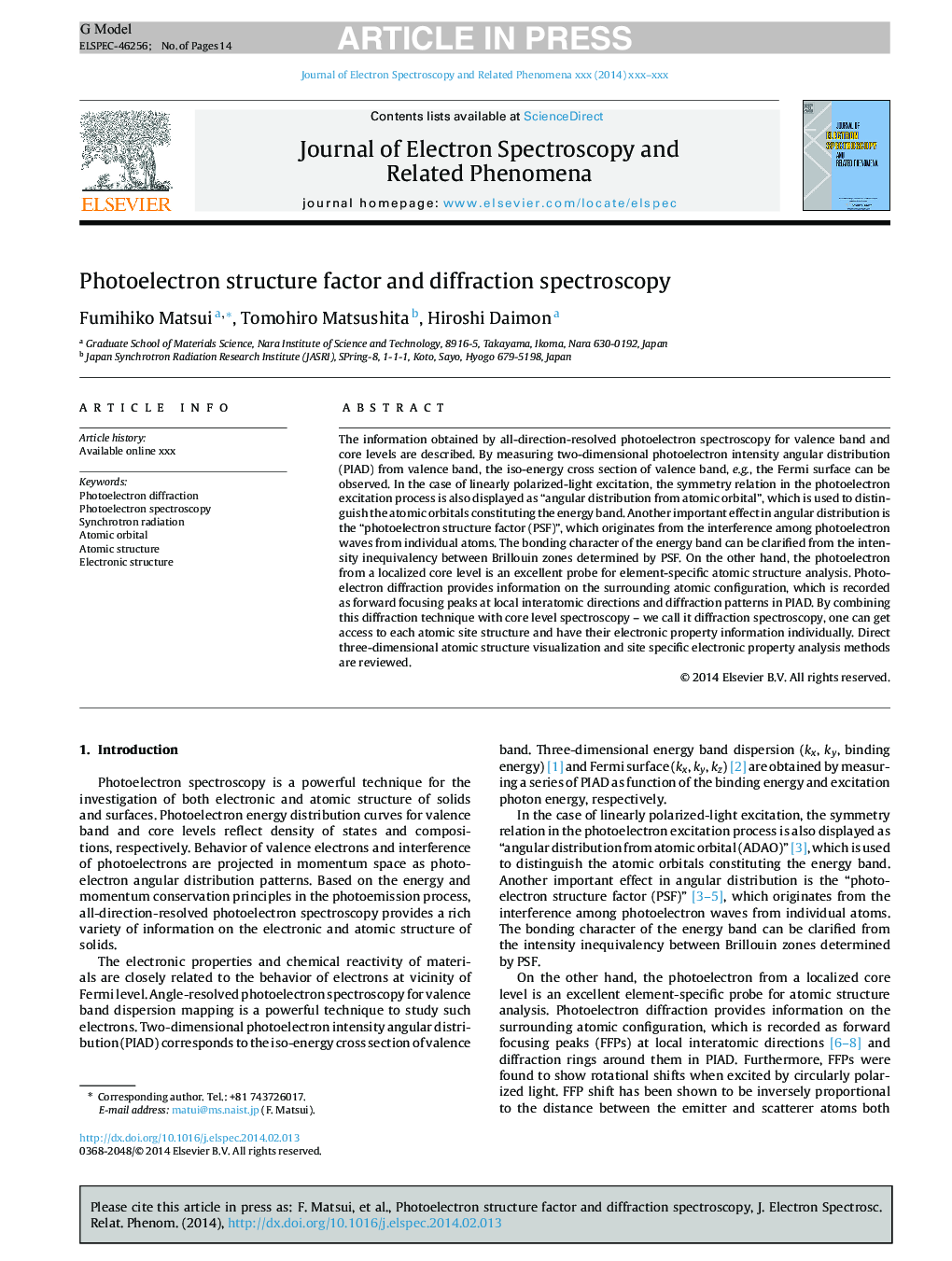| Article ID | Journal | Published Year | Pages | File Type |
|---|---|---|---|---|
| 5396009 | Journal of Electron Spectroscopy and Related Phenomena | 2014 | 14 Pages |
Abstract
The information obtained by all-direction-resolved photoelectron spectroscopy for valence band and core levels are described. By measuring two-dimensional photoelectron intensity angular distribution (PIAD) from valence band, the iso-energy cross section of valence band, e.g., the Fermi surface can be observed. In the case of linearly polarized-light excitation, the symmetry relation in the photoelectron excitation process is also displayed as “angular distribution from atomic orbital”, which is used to distinguish the atomic orbitals constituting the energy band. Another important effect in angular distribution is the “photoelectron structure factor (PSF)”, which originates from the interference among photoelectron waves from individual atoms. The bonding character of the energy band can be clarified from the intensity inequivalency between Brillouin zones determined by PSF. On the other hand, the photoelectron from a localized core level is an excellent probe for element-specific atomic structure analysis. Photoelectron diffraction provides information on the surrounding atomic configuration, which is recorded as forward focusing peaks at local interatomic directions and diffraction patterns in PIAD. By combining this diffraction technique with core level spectroscopy - we call it diffraction spectroscopy, one can get access to each atomic site structure and have their electronic property information individually. Direct three-dimensional atomic structure visualization and site specific electronic property analysis methods are reviewed.
Keywords
Related Topics
Physical Sciences and Engineering
Chemistry
Physical and Theoretical Chemistry
Authors
Fumihiko Matsui, Tomohiro Matsushita, Hiroshi Daimon,
